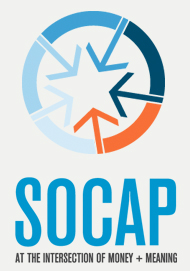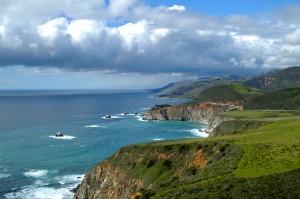From shrimp in Mexico to sea cucumbers in Madagascar, pioneering NGOs are testing new approaches to open ocean aquaculture that emphasize environmental stewardship and increasing local wealth — and lay the foundation for financially investable models.
In the Gulf of California, Olazul, or “blue wave,” is prototyping small-scale, pod-like shrimp farming enclosures to grow local shrimp species on native feeds, like seaweed. That addresses some of the main causes of environmental degradation associated with aquaculture: introduction of non-native species (which can escape and compete with or pass diseases to native populations), the use of forage fish in pellet feed, and the effluent from intensive-feeding.
In Madagascar, Blue Ventures has partnered with a local company to expand the use of patented sea cucumber hatchery technologies developed by universities and foundations. Blue Ventures trains coastal Malagasy community ventures — largely run by women — to buy juvenile cucumbers, farm them to a size of 40 cm or larger, and then sell them back for processing and export.
Such organizations are “hacking” aquaculture systems to redesign them for the poor, Olazul’s executive director, Beau Perry, said at an early July kickoff event for 2013 SOCAP: Oceans at the HUB in San Francisco. “Fishing communities need livelihoods to escape the [natural] resources death spiral.”
Their new model is “community-based aquaculture” — low-impact, open-ocean aquaculture projects, developed with local ecosystems and communities in mind. It is intended to help poor fishing communities develop viable livelihood alternatives for themselves, in the face of the uncertainties and environmental perils of fishing marine resources that are under increasing pressure.
Both organizations focus on animals low on the food chain, with high demand in the global marketplace. Harnessing their social capital in local communities, both Olazul and Blue Ventures act as third-party “R&D departments,” technical assistants, and brokers to help develop social and environmentally-responsible farming ventures.
Raising Low-Impact Shrimp and Livelihoods in Mexico
Shrimp is among the most popular seafoods in the U.S., but most of the supply comes from unsustainable wild harvest or aquaculture methods.
Olazul’s pilot shrimp pod project last year near La Paz in Baja California Sur grew native brown shrimp in submerged, open ocean water cages. Inside the cages, Olazul’s team cultivated mini-ecosystems of microalgae and seaweed which attracted small sea creatures (such as amphipods) and provided the shrimp with a regular diet. The shrimp refuse was less in volume and less nitrogen-heavy (a big source of damaging pollution) than conventional shrimp farming.
La Paz chefs have reported that Olazul’s shrimp look and taste better than conventionally-farmed shrimp. Olazul believes that their shrimp contain high amounts of fatty-acids and anti-oxidants as a result of their diet, and is currently raising money to test that assertion.
Olazul’s community-centric approach is key for buy-in, innovative contributions from local practitioners, and sustainability of projects, said Jos Hill, Olazul’s Director of Asia Pacific Programs. “We’ll fly in the experts to get their ideas. But then, we want to ask local fishermen to see what they think is possible and gain their involvement in shaping the projects…We want to incentivize them to protect their own resources…”
Olazul is currently exploring similar prototypes for small aquarium fish in Indonesia. The organization eventually hopes to develop a for-profit business model that addresses the needs of these small-scale farmers, through product aggregation, certification, or umbrella services like insurance.
“The important thing is to get the [farming] model right,” Hill said. “Traditional aquaculture rushes to profitability at the expense of the environment and without regard to local communities. We’ll come up with profitable business models down the line, once the R&D is done.”
Farming Sea Cucumbers in Malagasy Villages
Blue Ventures’ project builds on research by the Universities of Brussels and Mons, in a partnership with the Malagasy University of Toliara’s Institute of Fisheries and Marine Science, which have developed a patented method of sea cucumber hatchery reproduction.
In 2009, these universities worked with a couple of local Malagasy entrepreneurs to develop a pilot sea cucumber-production business named Madagascar Holothurie SA (MHSA).
To increase the social impact of their business model and increase production capability, MHSA partnered with Blue Ventures, which identifies suitable farming locations and trains coastal Malagasy communities to raise sea cucumber juveniles from MHSA’s hatchery. Based on the success of the model and the potential for positive social and environmental impact, MHSA’s entrepreneurs secured funding from a French venture capital fund Investisseurs & Partenaires (I&P) and the Netherlands’ Private Sector Investment program—in addition to bank loans and personal capital—to launch a larger commercial sea-cucumber farming venture named Indian Ocean Trepang (IOT).
Demand for sea cucumbers in Asia, where the delicacy is believed to have medicinal qualities, means the product can retail for hundreds, even thousands of dollars per kilogram. I&P was also attracted by the 150 jobs the new business will create in the Malagasy factory headquarters alone—not including the jobs created in the local villages Blue Ventures works with, said Elodie Nocquet, an I&P Financial and Environmental Social and Governance officer. She added that IOT’s business plan does not tax existing environmental resources and even contributes to the repopulation of sea cucumbers in the wild.
I&P is taking a long view with its combined equity-loan investment of €600,000 (just under $800,000) of the €2 Million (approximately $2.66 Million) project. The fund plans to sell their equity to the Malagasy entrepreneurs after a flexible term of investment. The exit is anticipated to be between 2017 and 2019, depending on the business’ progress.
Meanwhile, the universities and Blue Ventures are piloting red seaweed farming for the production of carageenan, which is used widely for texturing in the food and cosmetic industries.
The village farms Blue Ventures works with are not quite breaking even, but they’re on track to achieve profitability within at least four years, says Blue Ventures’ Mariculture Development Coordinator Antoine Rougier.
As an NGO, Blue Ventures is interested in helping the poorest and most remote communities, which is more risky and initially capital-intensive. Once a community demonstrates sufficient ecological-support and management capabilities, Blue Ventures can help negotiate terms and deals between the small farmers and the commercial ventures.
“The goal of these programs is to increase wealth for these impoverished communities,” says Rougier. “We don’t want these programs to collapse after 3-4 years and we don’t want to become a seafood processor, exporter. This is a symbiotic relationship between ventures, our non-profit, and the communities we work with.”
(This article is part of a series on Oceans and Sustainable Fisheries, in association with SOCAP 13, the Social Capital Markets conference in San Francisco, Sept. 3-6.)




